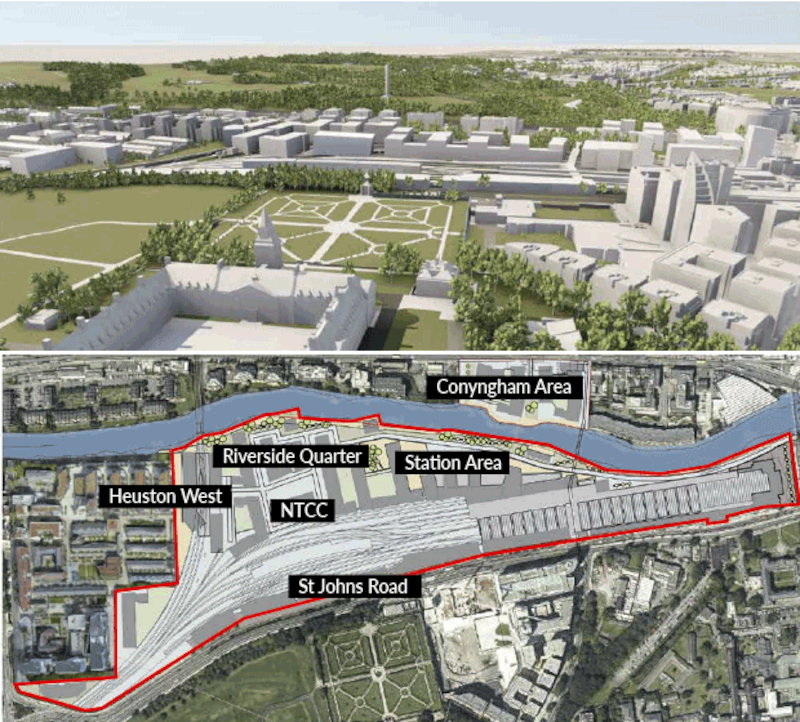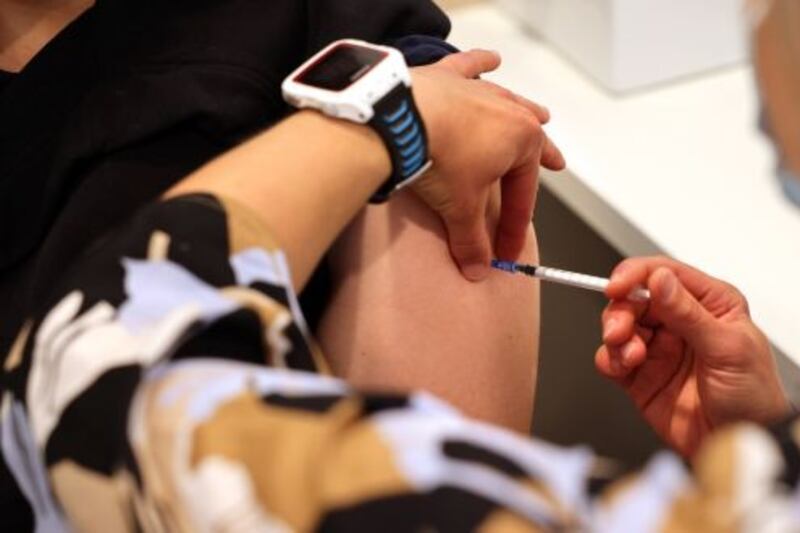The 10-hectare site around Heuston Station is set to be transformed into a largely car-free, mixed-use development that will include more than 1,000 residential units, under a plan published on Tuesday.
The Heuston masterplan, unveiled by CIÉ, the holding company that sits above Dublin Bus, Irish Rail and Bus Éireann, also features new cycling and pedestrian infrastructure.
Commercial, residential, retail and leisure units will also form part of the development under the plan, designed by O’Mahony Pike architects.
Two bridges will be constructed across the River Liffey for cyclists and pedestrians, along with 5,000 bicycle parking spaces to encourage more active travel.
The Conyngham Road green bridge will provide a new link between the Heuston station train hall and the gates of the Phoenix Park, while the existing railway bridge at the Phoenix Park tunnel is to be extended to also provide a second river crossing for pedestrians and cyclists.
This will make the 175-year old train station more accessible, the plan states.
The plan, which will proceed in phases, will gradually remove all existing car parking places. Drop-off locations and taxi areas will remain.
The ongoing transport operations and planned enhancements will be safeguarded, according to CIÉ.

There will also be improved public transport provision through a new station at Heuston West, as previously announced as part of the Dart+ South West proposals.
The new station is expected to be located northwest of the greater Heuston Station complex, adjacent to the Liffey railway bridge and the Clancy Quay development.
Connectivity between public transport measures is expected to be strengthened through the establishment of the pedestrian and cycling infrastructure.
About 1km of river frontage will be opened. The area will also be linked to local amenities such as Phoenix Park and the Irish Museum of Modern Art.
The final cost of the project has not yet been determined, but the gross development value is estimated to be in the region of €1 billion.
The main development will be funded on a commercial basis through a partnership with a developer while the enabling works are expected to be funded through the CIÉ or potentially other sources such as the National Transport Authority.
Asked if the residential units would include affordable housing, CIÉ said it is working with the Land Development Agency in that regard, adding that they “envisage a mix” of housing availability.
Heart of Dublin
The CIÉ said the plan seeks to ensure that public transport and active travel, such as walking and cycling, are at the heart of a “vibrant, new urban area in Dublin”.
CIÉ, working with estate agents Lisney, will seek a developer partner in the first half of 2022 to develop the masterplan proposals further. It intends to submit a planning application for the site in 2023, with construction beginning “as soon as possible” after that.
It is expected the development will take up to 15 years to complete.
Announcing the proposals, CIÉ group executive Lorcan O’Connor said they will deliver a “largely car-free development”.
“We will link those who live, work and travel through Heuston directly to the Phoenix Park through pedestrian/cycling bridges and open up 1km of river front, enhancing quality of life,” he said.
“Additionally, the development itself will support the enhancement and expansion of public transport services proposed under the National Development Plan and beyond.”
Minister for Transport Eamon Ryan said well-planned transport-led development is “one of the key components to a thriving city”.
“The exciting proposals outlined in the Heuston masterplan clearly have the potential to transform the Western edge of Dublin city,” he said.












